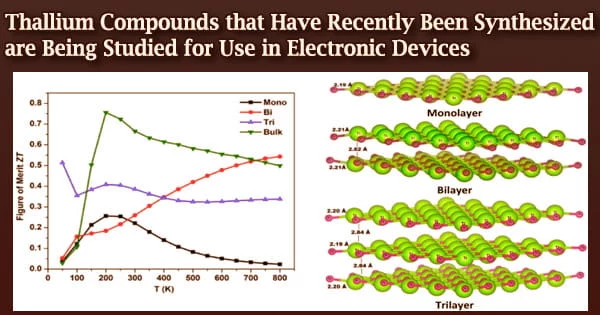The creation of new alkali metal-based chalcogenides with properties that need to be thoroughly researched is being driven by the developing field of optoelectronic devices. The problem of finding novel semiconductors with useful features is expanding along with the demand for effective optoelectronic devices.
In order to create new alkali metal-based (AM) chalcogenides with desirable qualities like flexibility, high thermal stability, semiconductivity, and photovoltaic effects, extensive research has been conducted in these areas.
Abdelmadjid Bouhemadou, from the Laboratory for Developing New Materials and their Characterizations at the Department of Physics in the Faculty of Science at the University of Ferhat Abbas Setif in Algeria, and his co-authors recently published a new paper in EPJ B that examined in depth the structural, elastic, electronic, and optical properties of two newly synthesized compounds, Tl2CdGeSe4 and Tl2CdSnS4.
The authors of the research discuss issues with AM-based chalcogenides that restrict technological applications, and they add that thallium (Tl)-integrated compounds like Tl2CdGeSe4 and Tl2CdSnS4 could overcome these drawbacks.
Tl is substantially less electropositive than alkali metals, according to the researchers, despite having a much higher electronegativity than any alkali metal. As a result, Tl-based compounds become less ionic, which could result in reduced electrical resistivities and increased carrier mobilities.
Tl has lower lattice thermal conductivity than any stable alkali metal due to its weight, which enhances physical features like thermoelectric efficiency that call for low lattice thermal conductivity. Additionally, compared to compounds based on AM, materials containing Tl are often less sensitive to moisture and air.
The investigation of Tl-based chalcogenides has received considerable study attention due to these and other benefits. The study’s findings, according to the paper’s authors, show that the examined materials had a high absorption in an energy window that includes the visible spectrum.
Also supporting the validity of the theoretical approach utilized to forecast the physical properties of the title compounds is the outstanding agreement between the optimized structural parameters of Tl2CdGeSe4 and Tl2CdSnSe4 with their experimental counterparts.
This showed that the investigated compounds are largely structurally and elastically anisotropic materials that are soft, ductile, mechanically stable, and anisotropic in terms of softness.
















